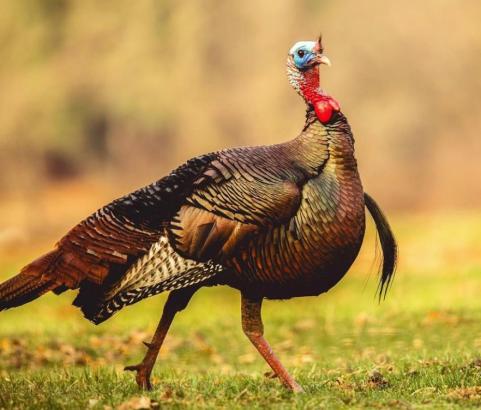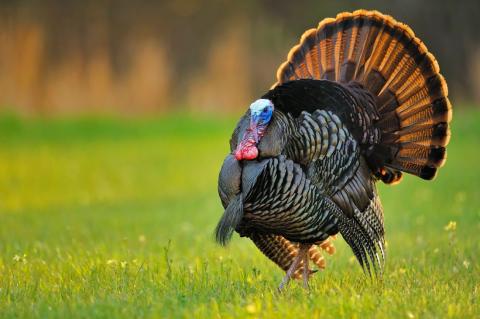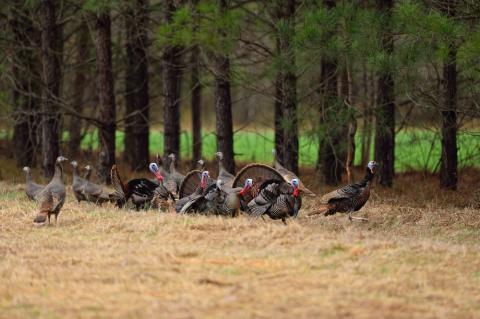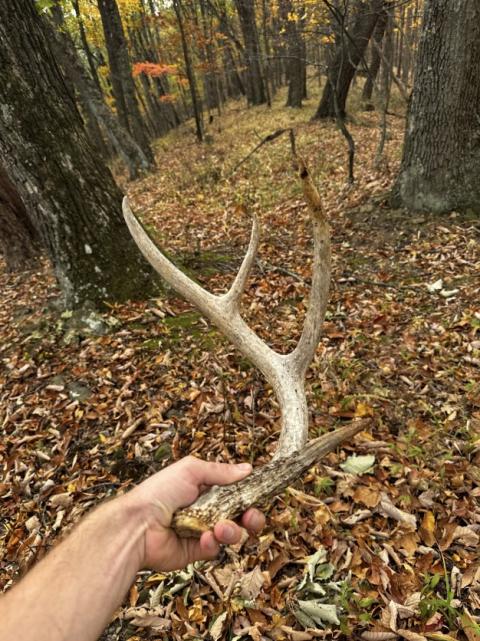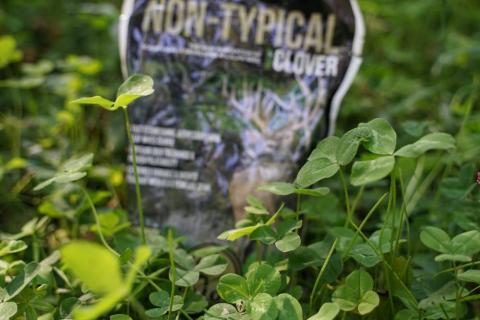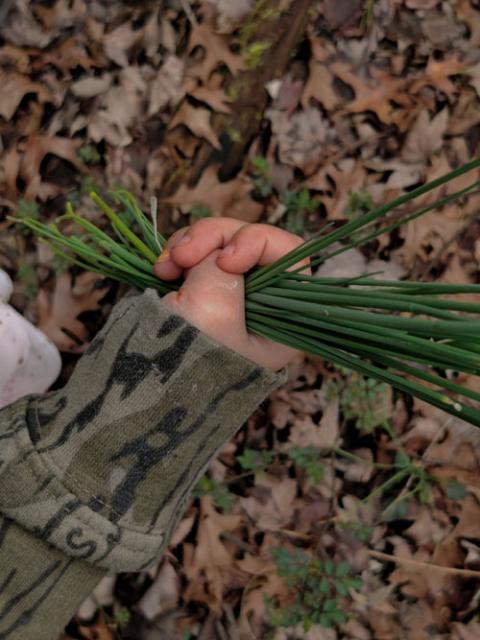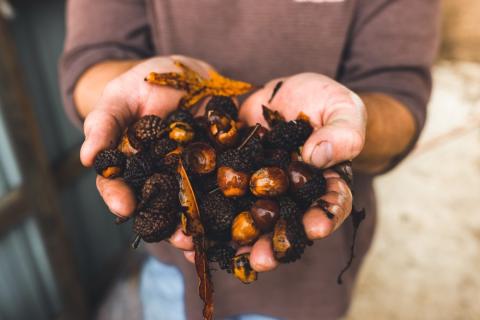By Heath Wood
Ticks significantly threaten deer populations, impacting their health and well-being. As hunters and land managers, it's crucial to understand effective methods for controlling these parasites to ensure a thriving deer population. What I love about hunters is that even though we love the hunt and the excitement of making the harvest, we have a certain passion and respect for the animals we hunt.
Each year, as I browse countless game camera photos, I'm often disheartened by the sight of deer clearly suffering from the effects of ticks. Whether it's a mature doe with an ear drooping due to ticks or young fawns with so many ticks around their eyes that they can barely see, it’s a harsh reminder of the cruelty in nature that we all hate to witness. I've often wondered if there's anything hunters can do to help reduce the tick population on whitetail deer.
Understanding Tick Threats

Ticks can transmit various diseases, including Lyme disease, anaplasmosis, and babesiosis. These illnesses can weaken deer, reduce reproduction rates, and even lead to death in severe cases. Effective tick management improves deer health and enhances the overall ecosystem.
As humans, we are blessed with the ability to spray down with sprays such as Permethrin and wear clothing specifically designed to block ticks from crawling up our bodies. When we get an occasional crawler, we use our fingers to remove and destroy the tick. Deer cannot do that, so how do we help?
Effective Methods for Tick Control

- Habitat Management
- Mowing and Clearing: Regularly mowing tall grasses and clearing brush can significantly reduce tick habitats. Ticks thrive in overgrown areas, so maintaining a well-managed landscape can help minimize their presence. Like humans, we know where to walk to avoid getting infested with ticks; deer often do the same when fields or grassy areas are maintained to shorter lengths.
- Creating Tick-Free Zones: Establishing clear, open spaces around high-traffic areas, like feeding stations and hunting blinds, can deter ticks from infesting these regions. Use a weed trimmer or mower several times throughout the summer to help deer along the way.
- Use of Tick-Controlled Livestock
- Introducing Livestock: Cattle, goats, and sheep are known to help reduce tick populations. Their grazing habits disturb tick habitats and reduce their numbers. I often assumed livestock would increase ticks, yet many farmers treat their livestock by reducing ticks. Plus, they keep grasses knocked down, creating more accessible travel routes for deer and other wildlife.
- Strategic Placement: Place livestock in areas where ticks are prevalent. Their presence can help break the tick lifecycle and lower tick populations. A few years ago, I hunted a farm featuring a small cattle pasture at the edge of a large hardwood timber track. The cows used the pasture daily, yet to my surprise, I had more deer pictures on my camera in that small pasture than in any other location without cattle.
- Tick-Treated Areas
- Tick-Safe Zones: Applying acaricides (tick-killing chemicals) to specific areas can reduce tick populations. Another significant impact on tick control for deer has been in areas where farmers routinely spray their fields to help control ticks on their livestock. I have witnessed more deer congregating in these treated areas. When harvesting early-season deer in these areas, I have noticed a remarkable difference in the number of ticks on deer when processing them after the harvest. Be mindful of environmental impacts and follow safety guidelines to protect non-target species.
- Regular Treatment: Consistent application of tick control products ensures ongoing management. To maintain effectiveness, follow recommended treatment frequencies.
Debunking Common Myths
- Myth 1: Ticks Only Affect Deer in Wooded Areas
Reality: Ticks can also be found in open fields and grassy areas. Effective tick management requires addressing all potential tick habitats, not just wooded areas.
- Myth 2: Deer Can Handle Tick Infestations
Reality: Severe tick infestations can lead to health problems for deer, including anemia and weakened immune systems. Tick control is vital for maintaining deer health and population stability.
- Myth 3: Chemical Treatments Are Harmful to Wildlife
Reality: When used responsibly, tick control products can be applied with minimal risk to other wildlife. Ensure treatments are targeted and follow recommended guidelines to protect the broader ecosystem.
More Ways Hunters Can Help Deer During Tick Season
- Monitor Deer Health
- Observation: Look for signs of tick infestations, such as excessive scratching, hair loss, or visible ticks on deer. Early detection can help address issues before they become severe. When deer suffering appears on my game cameras, I try to reduce their stress immediately.
- Observation: Look for signs of tick infestations, such as excessive scratching, hair loss, or visible ticks on deer. Early detection can help address issues before they become severe. When deer suffering appears on my game cameras, I try to reduce their stress immediately.
- Promote Tick-Control Practices
- Advocate for Management: Encourage habitat management practices on your property and neighboring lands. Collaborate with other hunters and landowners to implement tick control measures collectively.
- Advocate for Management: Encourage habitat management practices on your property and neighboring lands. Collaborate with other hunters and landowners to implement tick control measures collectively.
- Provide Support During Tick Season
- Supplemental Feeding: In areas where ticks are prevalent, providing supplemental feed can help deer maintain their health and resilience against tick-borne diseases. I have often used minerals formulated specifically for deer. Yet, I also use mineral blocks for livestock that many farmers say help reduce the amount of ticks placed within a few feet of my supplemental feeds.
- Enhance Water Sources: Ensure that water sources are clean and easily accessible. Healthy deer are better equipped to handle tick infestations. Many hunters have begun creating supplemental watering stations by placing small stations throughout their hunting property, especially during dry weather or in areas lacking natural water sources.
- Educate and Inform
- Share Knowledge: Educate fellow hunters and land managers about the importance of tick control and share effective strategies. Awareness and collaboration can lead to better tick management practices across larger areas.
Managing ticks is essential for maintaining healthy deer populations and a balanced ecosystem. Hunters can play a crucial role in tick control by employing habitat management techniques, tick-treated areas, and debunking myths. Additionally, monitoring deer health, promoting tick-control practices, and supporting deer during tick season are vital actions that contribute to the overall well-being of these animals. Effective tick management ensures that deer populations remain robust and resilient, benefiting wildlife and the hunting community.

















